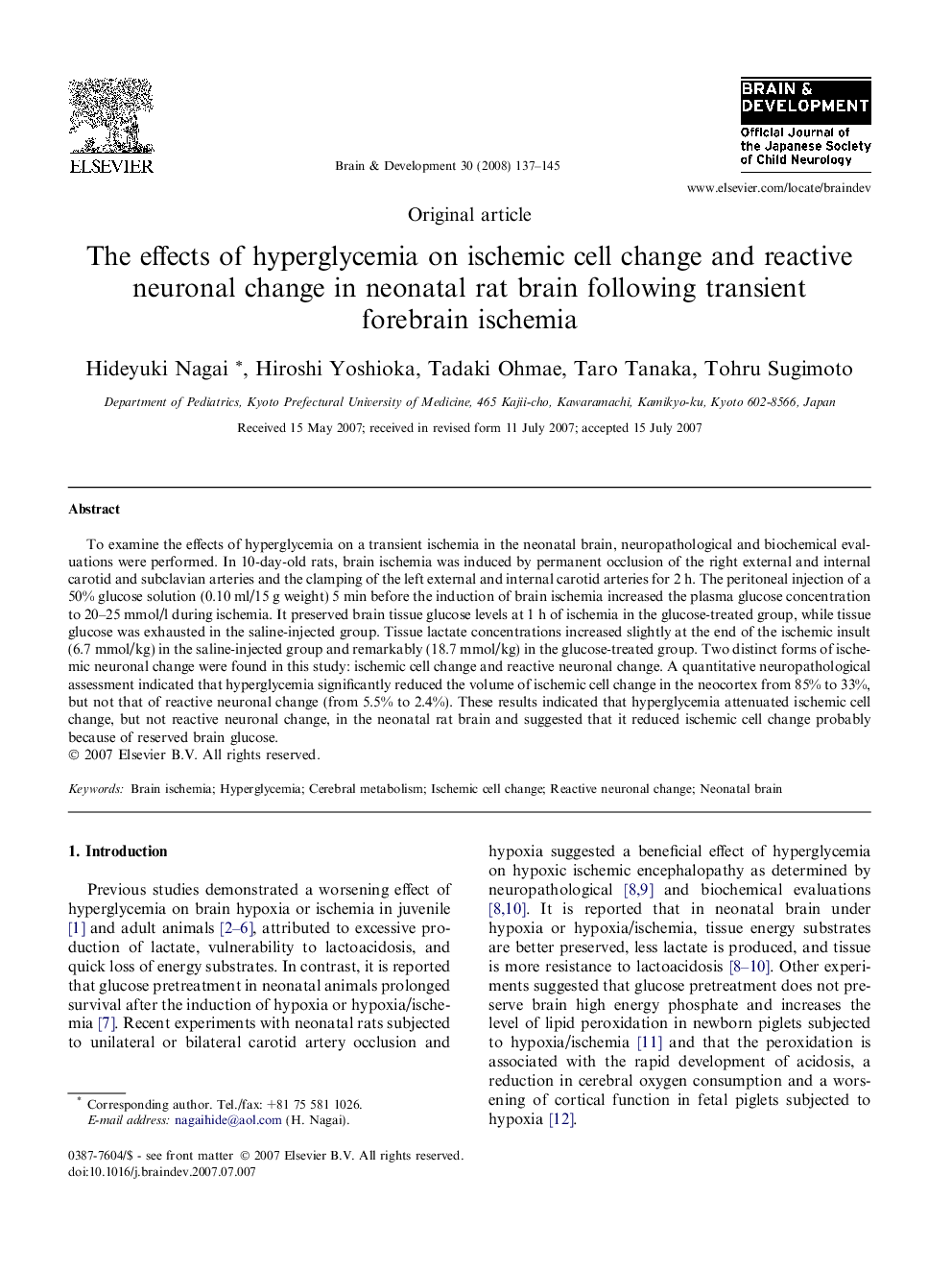| Article ID | Journal | Published Year | Pages | File Type |
|---|---|---|---|---|
| 3038199 | Brain and Development | 2008 | 9 Pages |
Abstract
To examine the effects of hyperglycemia on a transient ischemia in the neonatal brain, neuropathological and biochemical evaluations were performed. In 10-day-old rats, brain ischemia was induced by permanent occlusion of the right external and internal carotid and subclavian arteries and the clamping of the left external and internal carotid arteries for 2Â h. The peritoneal injection of a 50% glucose solution (0.10Â ml/15Â g weight) 5Â min before the induction of brain ischemia increased the plasma glucose concentration to 20-25Â mmol/l during ischemia. It preserved brain tissue glucose levels at 1Â h of ischemia in the glucose-treated group, while tissue glucose was exhausted in the saline-injected group. Tissue lactate concentrations increased slightly at the end of the ischemic insult (6.7Â mmol/kg) in the saline-injected group and remarkably (18.7Â mmol/kg) in the glucose-treated group. Two distinct forms of ischemic neuronal change were found in this study: ischemic cell change and reactive neuronal change. A quantitative neuropathological assessment indicated that hyperglycemia significantly reduced the volume of ischemic cell change in the neocortex from 85% to 33%, but not that of reactive neuronal change (from 5.5% to 2.4%). These results indicated that hyperglycemia attenuated ischemic cell change, but not reactive neuronal change, in the neonatal rat brain and suggested that it reduced ischemic cell change probably because of reserved brain glucose.
Related Topics
Life Sciences
Neuroscience
Developmental Neuroscience
Authors
Hideyuki Nagai, Hiroshi Yoshioka, Tadaki Ohmae, Taro Tanaka, Tohru Sugimoto,
